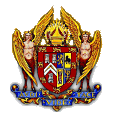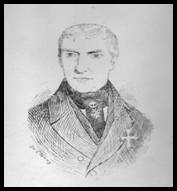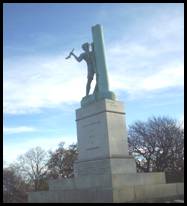
| | HOME | |
|
|
|
|
SOME DISTINGUISHED CHARACTERS AND INTERESTING PLACES Dr WILLIAM REID CLANNY
Mention the name “Clanny” to anyone, particularly in this area, and invariably the response will be “I think he was a Sunderland man and didn’t he invent the miners’ safety lamp – or was that Humphrey Davy?” Dr William Reid Clanny was born in Ireland, educated in Edinburgh but lived 45 years of his life in Sunderland. He became a Joining Member of Sea Captains’ Lodge. A report was issued in 1813 covering the collieries in the Tyne and the Wear areas which estimated that over 600 men and boys had been destroyed by explosions of inflammable gas during the years 1812 and 1813 – almost 6 per week! An organization was set up in Sunderland in 1813 named “A Society for preventing accidents in Coal Mines”. but this proved fairly ineffectual. Dr Clanny, however, had already been busy in this field and by the end of 1813, after several attempts, he produced a lamp for which he received the grateful thanks of the society In 1817 he produced a steam lamp for which he received the gold medal award from the Society of Arts. It is recorded that Sir Humphrey Davy was shown Clanny’s latest lamp by Dr Gray at the Bishopwearmouth Rectory in 1815 and that Davy was very complimentary about it!
The list of officers of the Dispensary or Infirmary for the year 1818 shows that the Patron was The Lord Bishop of Durham and that William Reid Clanny was one of four Physicians. THE BLUE CHOLERA EPIDEMIC OF 1831 This disease spread across mainland Europe during the years 1829-1830 and reached Sunderland (the first place in England) in October 1831. In Sunderland, the second person to die from the disease was Jack Crawford “The hero of Camperdown” (see below) who was buried in the churchyard of Sunderland Parish Church (Church of Holy Trinity) Dr Clanny carried out tests on a sailor with the cholera disease and using a healthy person as a control he observed that the blood water level in the former was considerably lower than that in the case of the control and there was an increase in the volume of a certain other substance. His findings were published in the Lancet in 1832 and are marked as a reference in an ongoing study. Dr W R Clanny - Apparatus for relieving pressure of the atmosphere from the body or limbs. LANCET 1835; 1: 804-805 JACK CRAWFORD
This statue was erected by subscription by the townspeople of Sunderland. “THE SAILOR WHO SO HEROICALLY NAILED ADMIRAL DUNCAN’S FLAG TO THE MAIN-TOP-GALLANT-MAST OF H. M. S. VENERABLE IN THE GLORIOUS ACTION OFF CAMPERDOWN, ON OCTOBER 11TH 1797. JACK CRAWFORD WAS BORN AT THE POTTERY BANK SUNDERLAND IN 1775 AND DIED IN HIS NATIVE TOWN in 1831 AGED 56 YEARS.” |
Approved by the United Grand Lodge of England | Legal Notice



